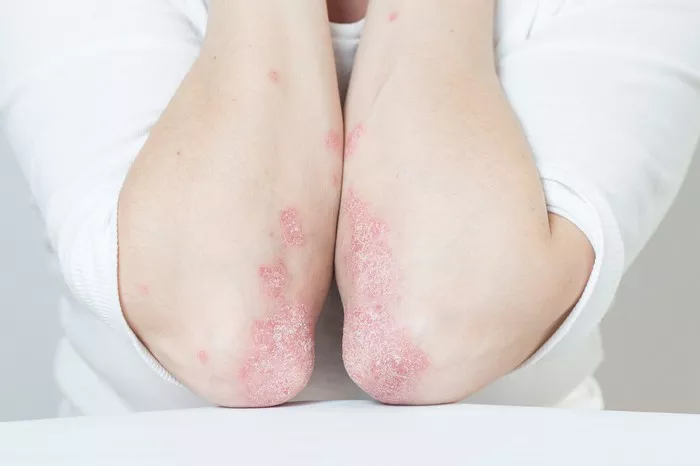White patches on the skin can be a source of concern for many people. These patches may be caused by various conditions, including vitiligo, tinea versicolor, and post-inflammatory hypopigmentation. Understanding the underlying cause is crucial for determining the best ointment for treatment. This article will explore the types of white patches, their causes, and the most effective ointments available for treatment.
Understanding White Patches on Skin
White patches occur when the skin loses its natural pigment. This can happen for several reasons. Identifying the cause of white patches is the first step in finding the right ointment or treatment.
Common Causes of White Patches
Vitiligo is an autoimmune condition that results in the loss of skin pigment. It causes irregular white patches on various body parts. The exact cause of vitiligo is unknown, but it may be linked to genetic factors and environmental triggers.
Tinea Versicolor
Tinea versicolor is a fungal infection that leads to discolored patches of skin. These patches can be lighter or darker than the surrounding skin. It often occurs on the back, chest, and arms.
Post-Inflammatory Hypopigmentation
After an injury or inflammation, such as eczema or psoriasis, the skin may lose pigment. This condition is usually temporary and can improve over time.
Pityriasis Alba
Pityriasis alba is a common skin condition, especially in children and adolescents. It appears as light, scaly patches on the face and arms and is often associated with dry skin.
Lichen Sclerosus
This is a rare condition that can cause white patches on the skin, particularly in the genital area. It leads to thinning and whitening of the skin.
SEE ALSO: What are the Early Signs of Vitiligo
Choosing the Right Ointment
Selecting the best ointment for white patches depends on the underlying cause. Here, we will discuss some effective treatments for the common conditions associated with white patches.
Ointments for Vitiligo
Topical Corticosteroids
- Description: Topical corticosteroids can help reduce inflammation and promote repigmentation in mild cases of vitiligo. They work by suppressing the immune response that attacks melanocytes, the cells responsible for skin pigment.
- Examples: Hydrocortisone, betamethasone, and clobetasol.
- Application: Apply the ointment as directed by a healthcare provider, usually once or twice daily. Avoid using them for extended periods to prevent skin thinning.
Topical Calcineurin Inhibitors
- Description: Tacrolimus and pimecrolimus are topical calcineurin inhibitors. They are used to treat vitiligo by modulating the immune response without the side effects associated with steroids.
- Application: Apply these ointments twice daily. They are generally well-tolerated and can be used on sensitive areas like the face.
Vitamin D Analogues
- Description: Calcipotriene is a synthetic form of vitamin D. It may help in repigmenting the skin in vitiligo patients.
- Application: Apply it as directed by a healthcare provider, typically once or twice daily.
Bimatoprost (Latisse)
- Description: Originally used to promote eyelash growth, bimatoprost has shown promise in repigmenting skin in vitiligo patients.
- Application: Apply it to the affected areas once daily, usually in the evening.
Ointments for Tinea Versicolor
Antifungal Creams
- Description: Tinea versicolor is a fungal infection that requires antifungal treatment. Over-the-counter antifungal creams can effectively treat this condition.
- Examples: Ketoconazole, clotrimazole, and miconazole.
- Application: Apply the cream to the affected areas as directed, usually once or twice daily for two to four weeks.
Selenium Sulfide Shampoo
- Description: Selenium sulfide is effective for treating tinea versicolor. It is often found in anti-dandruff shampoos.
- Application: Apply the shampoo to the affected areas and leave it on for 10 minutes before rinsing off. Use it two to three times a week for two to four weeks.
Azole Antifungal Creams
- Description: Azole antifungals are effective against tinea versicolor. They work by inhibiting the growth of fungi.
- Examples: Terbinafine and fluconazole.
- Application: Use as directed by a healthcare provider, usually once or twice daily for several weeks.
Ointments for Post-Inflammatory Hypopigmentation
Moisturizers
- Description: Keeping the skin hydrated is crucial for improving the appearance of post-inflammatory hypopigmentation. Use a gentle moisturizer to help soothe the skin.
- Examples: Cetaphil, Eucerin, and Aquaphor.
- Application: Apply moisturizer as needed, especially after washing the skin.
Topical Retinoids
- Description: Topical retinoids can help increase cell turnover and promote repigmentation. They are often used for post-inflammatory hyperpigmentation but can be helpful in some cases of hypopigmentation.
- Examples: Tretinoin and adapalene.
- Application: Apply as directed by a healthcare provider, typically once daily at bedtime.
Ointments for Pityriasis Alba
- Description: A mild topical corticosteroid can reduce inflammation and improve the appearance of pityriasis alba.
- Application: Apply a thin layer to the affected areas twice daily until symptoms improve.
Moisturizers
- Description: Keeping the skin moisturized is essential for managing pityriasis alba.
- Application: Use a gentle, hydrating moisturizer regularly, especially after bathing.
Topical Calcineurin Inhibitors
- Description: These can also be beneficial for treating pityriasis alba. Tacrolimus or pimecrolimus can help reduce inflammation and improve skin texture.
- Application: Apply as directed, usually twice daily.
Ointments for Lichen Sclerosus
Topical Corticosteroids
- Description: High-potency corticosteroids are the first-line treatment for lichen sclerosus. They help reduce inflammation and alleviate symptoms.
- Examples: Clobetasol propionate ointment is commonly used.
- Application: Apply to the affected areas once or twice daily as directed by a healthcare provider.
Moisturizers
- Description: Regular use of emollients can help keep the skin hydrated and reduce discomfort.
- Examples: Vaseline, Aquaphor, or other hypoallergenic moisturizers.
- Application: Apply as needed to maintain moisture.
When to Seek Medical Advice
While many white patches can be managed with over-the-counter ointments, some cases require professional medical attention. Consult a healthcare provider if you experience any of the following:
- The white patches spread rapidly.
- You experience itching, pain, or discomfort.
- The patches do not respond to over-the-counter treatments.
- You have a history of skin cancer or other skin conditions.
Lifestyle Tips for Managing White Patches
In addition to using the right ointments, consider adopting lifestyle habits that promote skin health and may help improve the appearance of white patches.
1. Protect Your Skin from the Sun
Sun exposure can worsen the appearance of white patches. Use a broad-spectrum sunscreen with SPF 30 or higher when outdoors. Reapply every two hours, especially if swimming or sweating.
2. Stay Hydrated
Drinking enough water is vital for skin health. Aim for at least eight glasses of water per day to keep your skin hydrated.
3. Eat a Balanced Diet
A healthy diet rich in vitamins and minerals can improve skin health. Include plenty of fruits, vegetables, whole grains, lean proteins, and healthy fats in your meals.
4. Manage Stress
Stress can exacerbate skin conditions, including those that cause white patches. Practice stress-reducing techniques such as yoga, meditation, or deep breathing exercises.
5. Avoid Harsh Skin Products
Use gentle, fragrance-free cleansers and moisturizers. Avoid products that contain alcohol or other irritating ingredients.
6. Follow a Skincare Routine
Establish a daily skincare routine that includes cleansing, moisturizing, and sun protection. Consistency is key to maintaining healthy skin.
Conclusion
White patches on the skin can be distressing, but many effective treatments are available. The best ointment depends on the underlying cause of the patches. Options range from topical corticosteroids and antifungal creams to vitamin D analogues and moisturizers. Always consult a healthcare provider for an accurate diagnosis and treatment plan tailored to your specific needs.
By understanding the causes of white patches and taking appropriate action, you can improve the appearance of your skin and restore your confidence. Remember that patience is vital, as some treatments may take time to show results. Regular follow-ups with a healthcare provider will help monitor progress and make any necessary adjustments to your treatment plan.
Related topics:


























